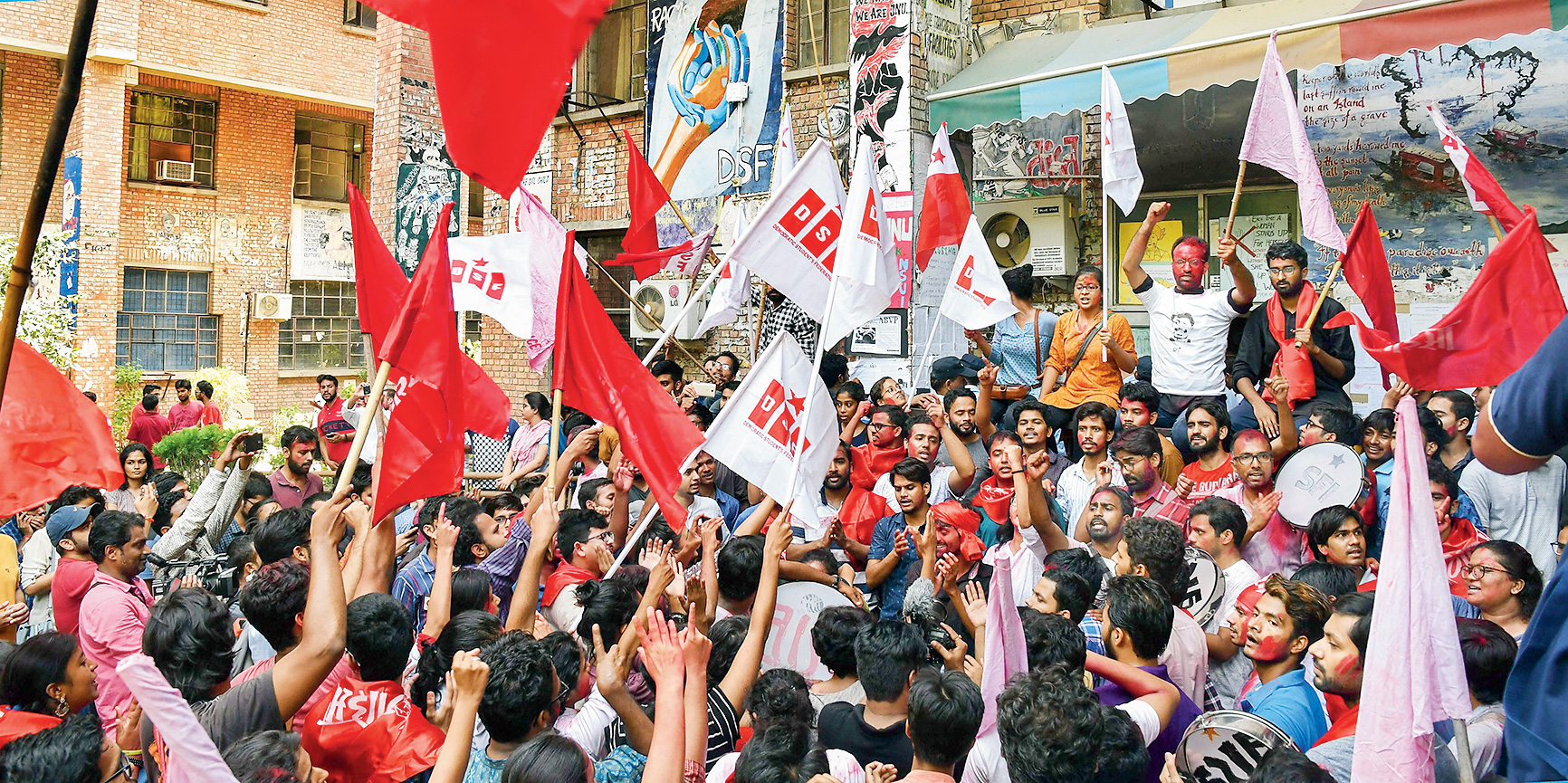Had Rudyard Kipling composed his famous poem, The Ballad of East and West, with Delhi’s Jawaharlal Nehru University (JNU) in mind, the poet may have been tempted to tweak his verses a little. The most famous line could well have read, “Left is Left and Right is Right and never the twain shall meet”.
The wisdom of Kipling’s amended verse would ring true in the light of yet another fractious university election, marred by fisticuffs during the hallowed presidential debate, intimidation and physical assault, all perpetrated, according to the victorious Left Unity — an amalgamation of Left constituencies — by the Akhil Bharatiya Vidyarthi Parishad (ABVP).
Of course, wherever the ABVP has planted its roots, its tentacles have spread far and wide after the Bharatiya Janata Party won power in 2014. It now has a presence in 20,000 of the 35,000 accredited colleges in India, and has brought with it an abrasive curriculum. Yet, there is a case to argue that the political discourse in JNU has been remarkably polarised ever since its inception, undermining the idea that a university should ideally be a space that encourages the blooming of all shades of opinion.
Former president of the JNU Students’ Union, Kanhaiya Kumar, who has been the subject of the wrath of the Right-wing, however, challenged the perception. “I have friends in the ABVP,” said Kumar. But conceded that the space for dialogue between ideological opponents has narrowed since 2014 as part of a concerted attempt by the Centre to malign the legacy of the institution. The “Left Unity”, Kumar explained, should be read as an attempt by progressive forces “to fortify JNU against an aggressive ideological and institutional assault”.
That the ABVP and the Left can co-exist, but only in personal spaces, was also witnessed by Sabyasachi Dasgupta, who had a nine-year stint at the School of Social Sciences. Dasgupta, who teaches in Visva-Bharati now, recalled that Sanjeev Mahapatra and Mahesh Gopalan, two students with conflicting political views, were known to be affectionate roommates. But then again, he admitted that he did not remember love blooming across the Great Divide. “I don’t think there were any ‘interfaith’ couples during my time,” he chuckled. “Such unions would certainly be scrutinised.” That there was no love lost between the Left and the Right was evident from some unsavoury incidents. “In the mid-1990s, a scuffle had broken out between the ABVP and AISA after the latter invited a former insurgent from Kashmir to speak in the campus.”
Dasgupta offers a curious explanation for the animosity. In JNU, the Left, he said, has been blessed with members gifted with particular kinds of “social and intellectual capital”. They thus blend well with the university’s remarkably vibrant and cerebral ecosystem. But for all their talk of equality, they have not entirely exorcised the accusation of being representative of elitist values. “The creation of the Birsa Ambedkar Phule Students’ Association (Bapsa),” the voice of the underprivileged, “can be seen as an outcome of this elitism. The ABVP seeks to neutralise the absence of such kinds of capital at its disposal with lumpenism.” Could it be the perception of a Brahminical Left has, over the years, created a chasm, shrinking the common ground that could have served as a meeting point for ideological adversaries?
There may be no easy answers, but there is no dearth of theories. Dipankar Sengupta, a self-confessed adviser to the ABVP during his JNU days, attributes the persistently fractured relationship between the Comrades and the Gauriks to — remarkably — the “amorphousness of centrism”. According to Sengupta, who teaches in Jammu University, JNU’s inception coincided with the Congress’s slow decline nationally. Consequently, centrist student parties are still an anathema here. “A stronger centrist space could have acted as an agent of moderation between the Right and the Left, injecting a degree of tolerance,” he said.
Sengupta has a different answer for ABVP’s lumpenism. “It all started when the ABVP in JNU lost its autonomy and capitulated to the designs of the minders in Delhi. JNU may be a microcosm of India but it is not a microcosm of Indian politics,” said Sengupta tellingly. These interventions were instrumental in filtering out the articulate voices within the ABVP, replacing muscle with mind, as it were. “The only way to challenge the ‘Stalinist’ Left’s hegemony in JNU is not a show of force but the willingness to invest in competing centres of excellence that would serve as viable alternatives to JNU,” argued Sengupta.
But this would imply the decoupling of politics from education, something that the Left has been known to resist as much as the Right.
Kipling, if he did amend the original verse, would have been wrong. The Left and Right can meet when it suits the occasion.

